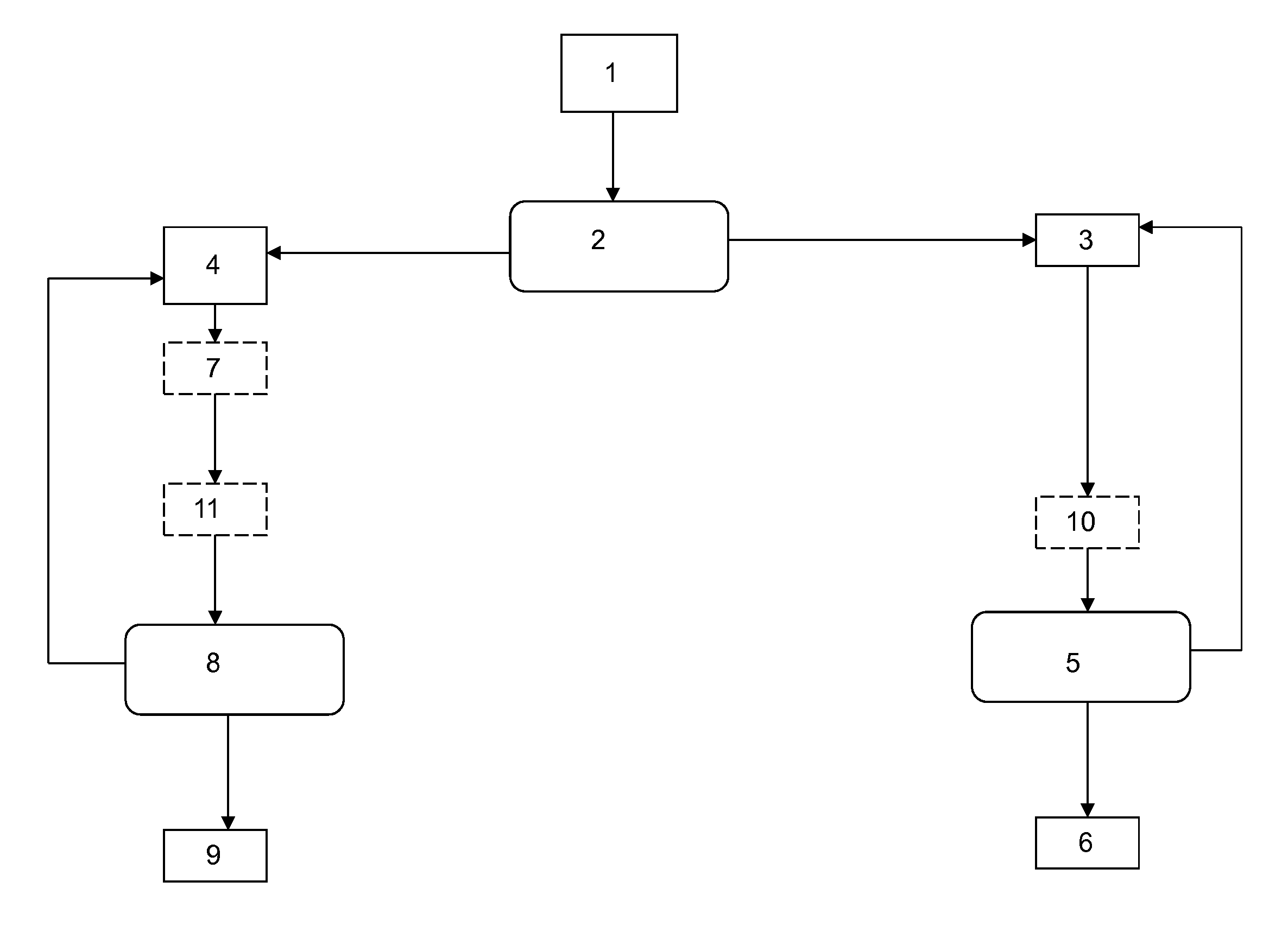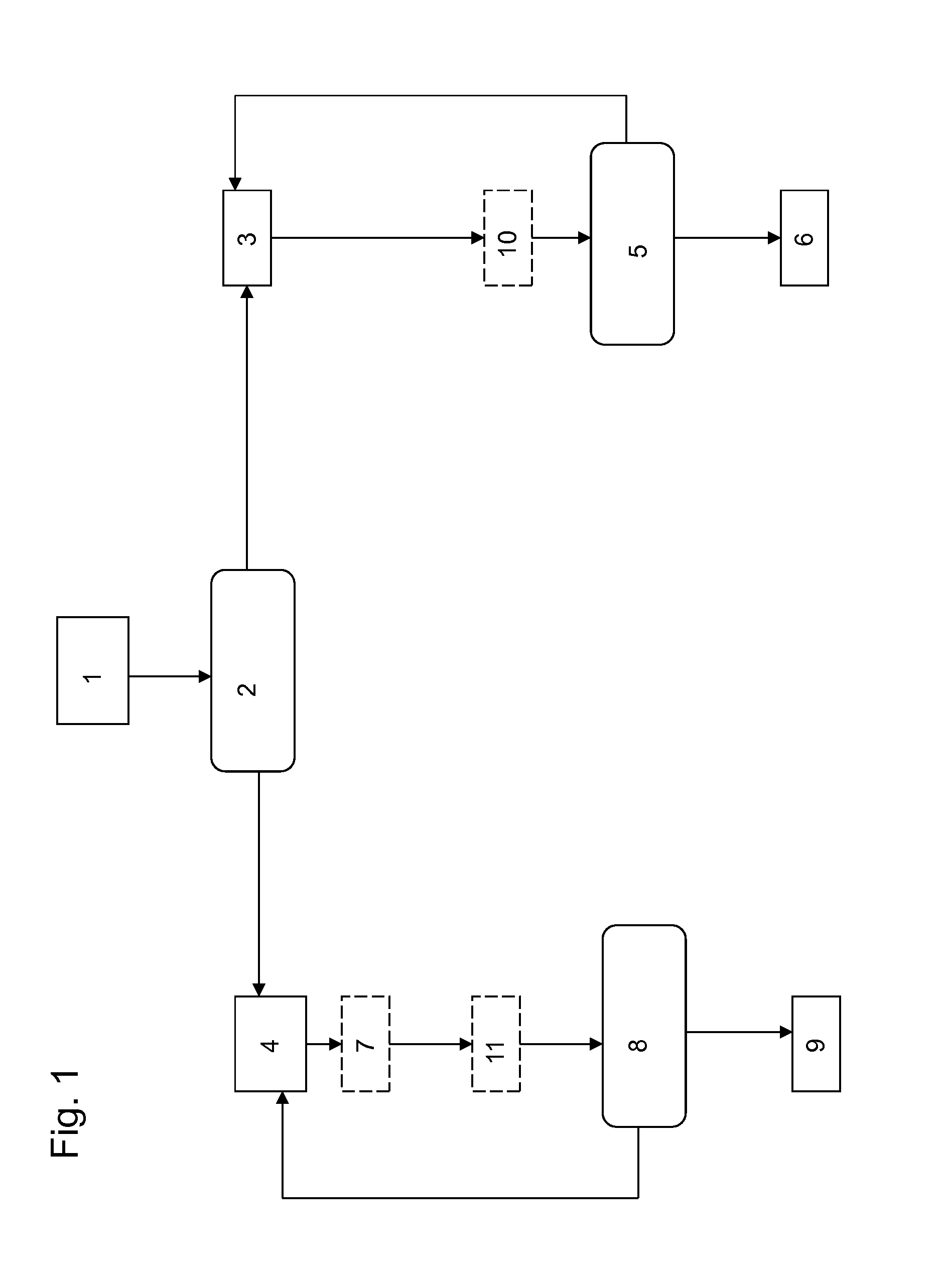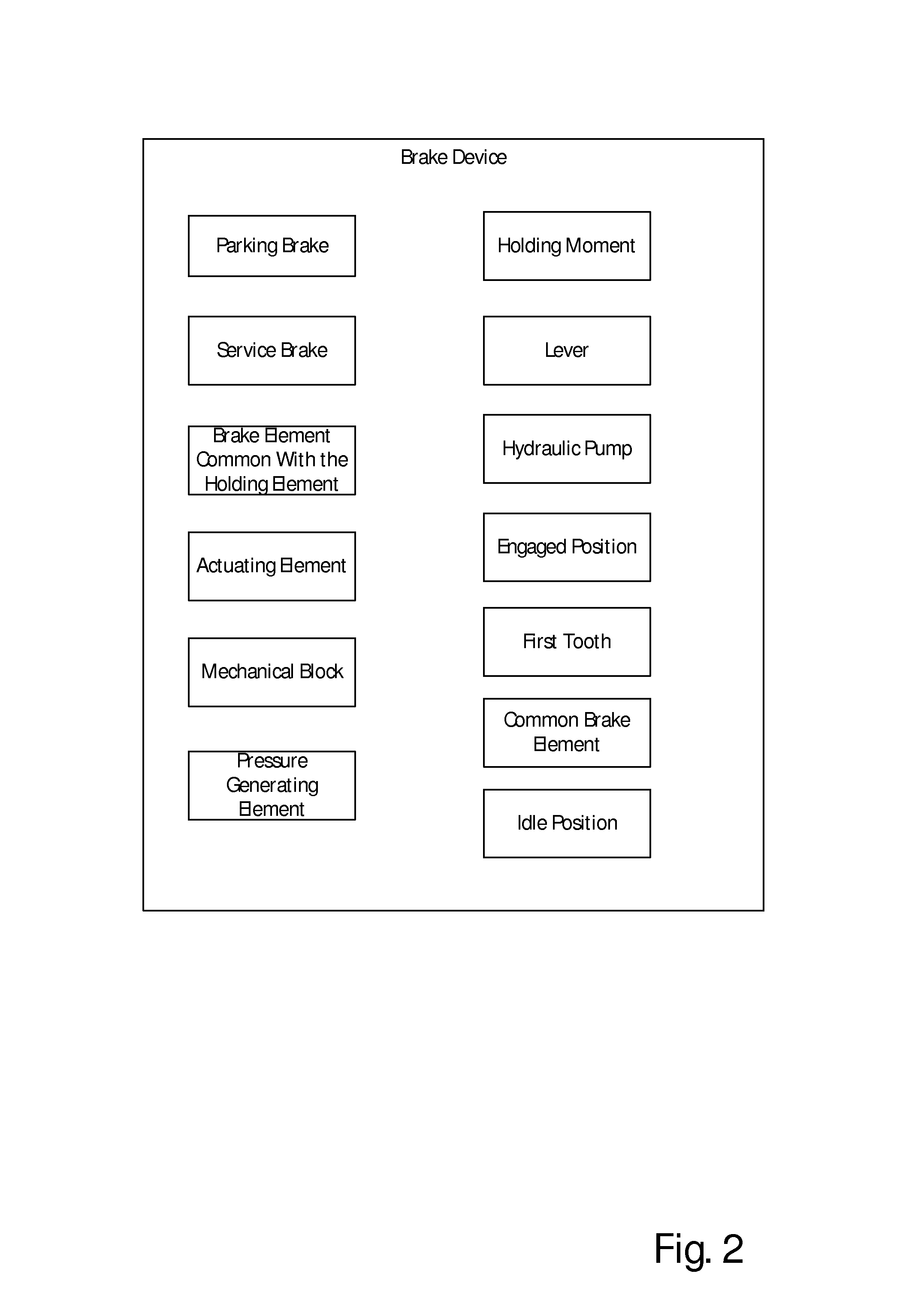Method for operating a mechanical parking brake
a technology of mechanical parking brakes and brake cylinders, which is applied in the direction of anti-theft devices, brake cylinders, braking systems, etc., can solve the problems of not being able to achieve the desired holding force. , to achieve the effect of reducing the force to be applied by the driver, increasing the holding force and high level of holding for
- Summary
- Abstract
- Description
- Claims
- Application Information
AI Technical Summary
Benefits of technology
Problems solved by technology
Method used
Image
Examples
Embodiment Construction
[0027]The method in accordance with the invention commences in block 1, in which it is established that an actuating element has been moved from its idle position into one of its positions of use. In other words, it is established in block 1 whether the parking brake is to be activated.
[0028]It is established in a decision block 2 whether a static parking brake mode or a dynamic parking brake mode is prevailing, which can be detected by means of the rotational speed of the wheels, i.e. using corresponding sensors.
[0029]The two signals “wheel rotation rate” and “actuation of the parking brake” are processed accordingly in block 2, so that a control signal is generated. If a static mode is recognized, the method is continued with block 3. If a dynamic mode is recognized, the method is continued with block 4.
[0030]In the static mode, a signal is generated in block 3, which signal activates the hydraulic pump of the ESP-unit, wherein preferably the maximum hydraulic pressure is generate...
PUM
 Login to View More
Login to View More Abstract
Description
Claims
Application Information
 Login to View More
Login to View More - R&D
- Intellectual Property
- Life Sciences
- Materials
- Tech Scout
- Unparalleled Data Quality
- Higher Quality Content
- 60% Fewer Hallucinations
Browse by: Latest US Patents, China's latest patents, Technical Efficacy Thesaurus, Application Domain, Technology Topic, Popular Technical Reports.
© 2025 PatSnap. All rights reserved.Legal|Privacy policy|Modern Slavery Act Transparency Statement|Sitemap|About US| Contact US: help@patsnap.com



